SUMMARY
This is AI generated summarization, which may have errors. For context, always refer to the full article.
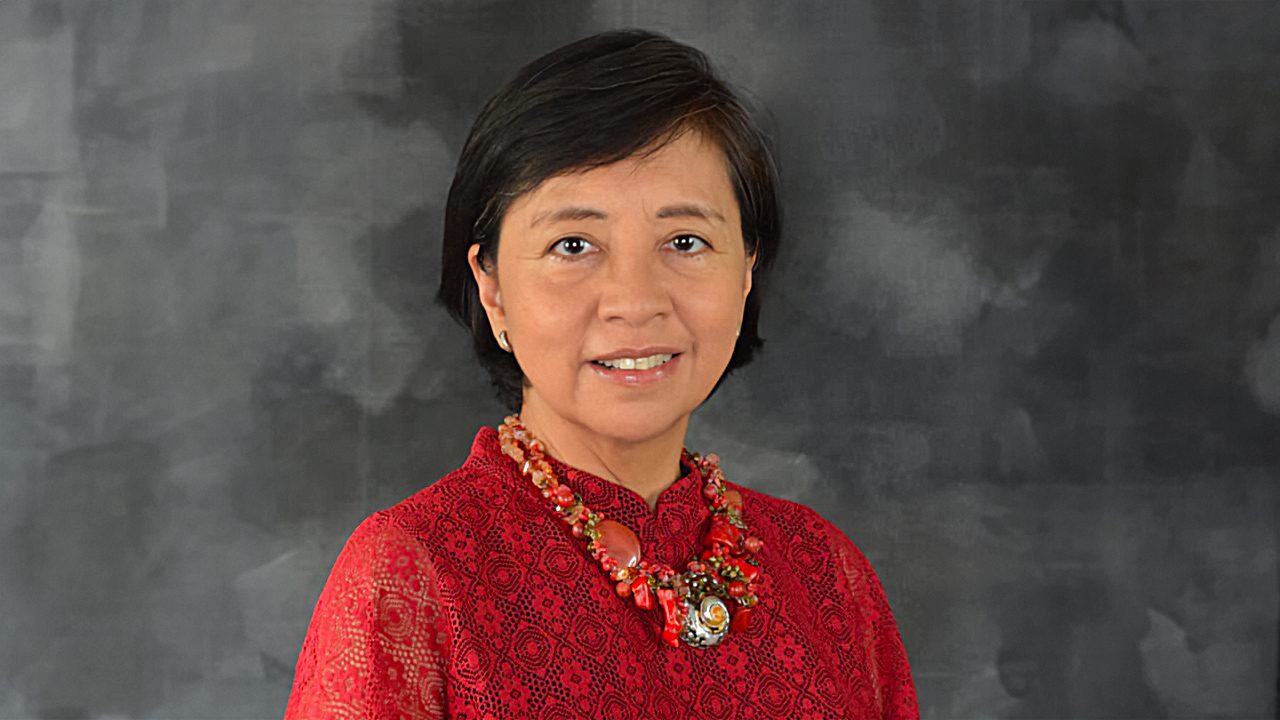
MANILA, Philippines – Miriam “Iye” Coronel-Ferrer knew she had to be a competent peace negotiator if she had to carry the banner of women who were at the peace table before her, and the women to come after her.
“Just to prove that point,” she said in a Rappler Talk interview. What point? That women deserve seats at the negotiating table where, supposedly, all wars end.
Not that she was too fond of the idea of having to justify women’s presence in rooms where formal peace negotiations were made.
“Look, you never ask why it is important to have men inside the room and yet when you talk about women participating in these processes it’s as if you have to justify it,” she said.
Coronel-Ferrer was the first woman to head the government peace panel in 2012, negotiating with the Moro Islamic Liberation Front (MILF). Her leadership saw the creation of the four annexes that detailed the transitional arrangements, revenue generation, wealth and power sharing, and normalization in the Bangsamoro. In 2014, the Comprehensive Agreement on the Bangsamoro was signed.
Being a female leader at the peace table was not smooth-sailing. She said she felt like she was a “novelty.”
Nevertheless, Coronel-Ferrer said peace agreements where women were present “have reflected more provisions related to issues that are very close to women and would have a direct impact on their lives.” Peace-building and women inclusion are ongoing work, for which she was recently recognized for when she was named as one the 2023 Ramon Magsaysay awardees.
Awakening
Coronel-Ferrer was born on December 9, 1959, in Manila. She is the daughter of Marcos lawyer Antonio Coronel and former public school teacher Dorotea Coronel.
She is the second of six children, the sister of veteran journalist Sheila Coronel who won the Ramon Magsaysay Award for Journalism, Literature, and the Creative Communication Arts in 2003.
In 1977, Coronel-Ferrer entered the University of the Philippines Diliman to study philosophy, where she would graduate cum laude. In 1991, she took a master’s in Southeast Asian Studies at the University of Kent at Canterbury in the United Kingdom.
Years later she would teach political science at the same university. She had just recently retired from teaching.
In 2019, Coronel-Ferrer co-founded the Southeast Asian Women Peace Mediators. She has two children with husband Anthony Ferrer.
During her undergraduate years, she wrote for the Philippine Collegian, the campus’ official student newspaper, from 1978 to 1980. She served as the paper’s news editor under editors-in-chief Diwata Reyes and Malou Mangahas.
The paper not only featured burning matters inside the campus but also national issues. The Collegian was part of the “mosquito press” or the alternative press during the dictatorship.
It was also at that time when the Communist Party of the Philippines (CPP) was gaining foot and recruiting many members across the country.
When the EDSA Revolution happened and Corazon Aquino became president, peace talks began between the government and the CPP. Coronel-Ferrer would recall the political climate then as her first exposure to peace negotiations.
“Iye is very invested in all aspects of the peace process even back in the early 2000, during our first encounter in conjunction with my work on [the] Moro National Liberation Front integration in the army,” Rosalie Arcala Hall, a political science professor from the University of the Philippines Visayas, told Rappler.
Hall remembered Coronel-Ferrer as the convenor at the UP Center for Integrative and Development Studies at that time. Throughout the years they would touch base on events that were concerned with humanitarian law, child soldiers, and security.
“Even though we do not come from the same UP unit, I appreciated the fact that she reached out to other scholars doing work in the Bangsamoro area,” Hall said.
Compromises and optimism
Decades later, she would head the government peace panel replacing Associate Justice Marvic Leonen.
There were a lot of women in the government panel because Leonen made sure to recruit his past female students from law school.
Coronel-Ferrer said having women in the negotiations made the process more sustainable. She also observed that men behaved differently when women were in the room.
In 2011, before Coronel-Ferrer took over as head of the government panel, the MILF named two Moro to its board of consultants, human-rights lawyer Raissa Jajurie and educator Bai Cabaybay Abubakar.
However, women’s presence does not necessarily mean they were the best advocates of women’s rights and equality. Coronel-Ferrer recalled the time when it took a male Islamic professor to achieve a breakthrough when they were discussing women’s rights and provisions related to these issues.
“I felt that they were listening more to him than if we said the same things a hundred times over.” She said the professor was able to frame women’s rights in the Islamic perspective, which they would not have been able to do by themselves.
These were some small compromises. “You have to play it smart. You have to play from where the other side is coming from. It’s not something you barge into a room and say, ‘You have to believe in women’s rights and so on.’”
Despite these, a peace negotiator should remain optimistic. “You have to be,” she said firmly.
After all, as she had said in a previous interview almost a decade ago, nothing is perfect in negotiations.
Look, you never ask why it is important to have men inside the room and yet when you talk about women participating in these processes it’s as if you have to justify it.
MIRIAM CORONEL-FERRER
Her optimism bleeds through her opinion of the state of the peace process in the Bangsamoro, now under a new government. In 2025, the first parliamentary elections will be held and the transition phase will soon be over.
Judging from peace accords across the world that had gone awry after a few years, Coronel-Ferrer said there are still some things that the country could be proud of. “It has withstood two turnovers of presidents.”
The things she said the public can be optimistic about: the Bangsamoro Organic Law which created a new political entity was passed, a plebiscite was held, a transition government was established, and the ceasefire is holding.
There is still violence, Coronel-Ferrer conceded, but resolution of the vertical conflict between the government and the MILF “has been achieved.”
A collective process
Coronel-Ferrer inherited a peace process that started in 1997 under the administration of Fidel V. Ramos. It went through four Philippine presidents before reaching a breakthrough. Ramos’ administration saw the signing of the Agreement for General Cessation of Hostilities.
However, whatever progress was made under Ramos was unraveled when his successor Joseph Estrada declared an all-out war against the MILF, an event that triggered a withdrawal from the peace talks.
Under Gloria Macapagal-Arroyo’s administration, the peace talks underwent vicissitudes following attacks and bombings.
After many hiccups, the Framework Agreement on the Bangsamoro was signed in 2012 under Leonen, who had Coronel-Ferrer as his vice chair and five other members in the panel.
Coronel-Ferrer took over in the same year after the framework was signed. Her leadership saw the creation of the four annexes that detailed the transitional arrangements, revenue generation, wealth and power sharing, and normalization. In 2014, the Comprehensive Agreement on the Bangsamoro was sealed.
The government and the MILF’s lengthy peace process demonstrates the complex history characteristic of peace negotiations around the world. As such, in other peace negotiations like the peaceful termination of the apartheid in South Africa, two leaders crucial in the process were awarded.
The office of Mohagher Iqbal, the peace panel chair of the MILF and now Minister of Education of the Bangsamoro Autonomous Region in Muslim Mindanao, told Rappler that they are “very much happy for the achievement of Ma’am Coronel-Ferrer.”
Thoughts on the CPP and gov’t
An activist in her campus days, Coronel-Ferrer had seen the CPP and other linked people’s organizations progress through the years.
The CPP leads the longest-running communist insurgency in the world, a splinter group of the Partido Komunista ng Pilipinas-1930 founded by Jose Maria Canlas “Joma” Sison in 1968.
The communist party found momentum in the 70s during the Martial Law years. The party harbors the Marxist-Leninist-Maoist ideology. The CPP sees the Philippines as a semi-feudal, semi-colonial society and believes armed struggle and a protracted people’s war would lead to a revolution.
It had been a bloody history for the communists. It failed to negotiate peace with the government under six Philippine presidents. Their latest attempt with former president Rodrigo Duterte broke down, a year after they started on relatively amicable terms.
After five decades, the CPP is nowhere near in sight of signing any peace agreement with the government or successfully staging a protracted people’s war.
Even the resumption of peace talks seems a sensitive topic. But before any peace talks were resumed, there needs to be honest internal assessments of both the CPP and the government, said Coronel-Ferrer.
“One of them definitely has to do with how uncivil each one talks to each other,” she said. “If it’s not there, how can you actually go beyond some of these very basic small talk and surface level conversations and go deep into the hard issues?”
Does the government need to rethink its strategy of attacking even those who do not hold weapons? Is the state only reproducing the repressive conditions that made the CPP thrive in the first place? These are some of the questions that Coronel-Ferrer raised.
On the other hand, she said the Maoist tactics that the CPP employed, which proved popular during the 50s and 60s, may already be dated.
Now the world has changed, she said. “I think there’s that kind of serious examination on how far this kind of guerrilla strategy could be carried over and to what extent is it gaining popular support.”
Peace: a how and where question
She had talked about an inevitable optimism. But doesn’t it get tiring given that all the hard work of peace negotiations can go down the drain because of the whim of a new administration? Or because of scalawags and pockets of rebels threatening the whole peace process?
While conflict is a human precondition, peace building finds value when it tries to answer the how and where questions.
“You can have all kinds of conflicts: family conflicts, conflict with your friend, lovers’ quarrels, and so on,” Coronel-Ferrer said. “But the…big question is how do you deal with conflict?”
She added: “Where do you bring it? Do you bring it to a situation where some transformation is achieved, a better relationship is actually created?”
Coronel-Ferrer believes that the whole point is to take an active stance. Not necessarily to employ violent means, but to find ways that provide sustainable solutions to long standing conflicts. – Rappler.com
Add a comment
How does this make you feel?

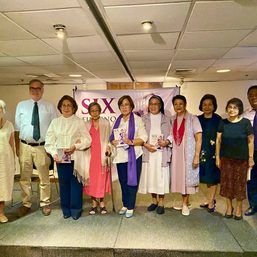

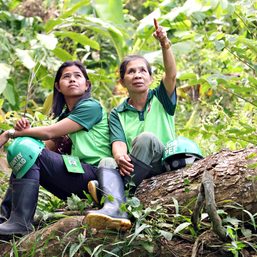
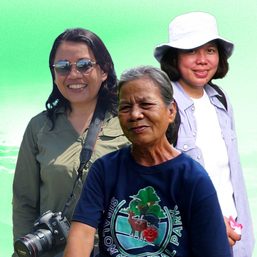
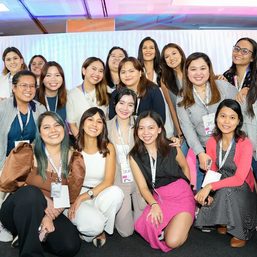
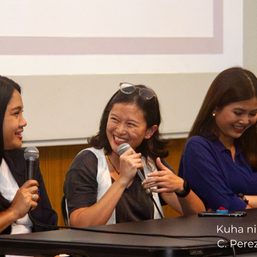
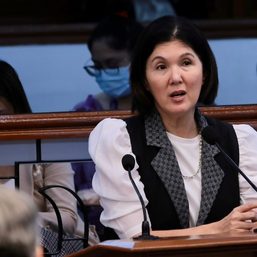
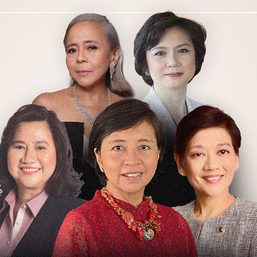
There are no comments yet. Add your comment to start the conversation.